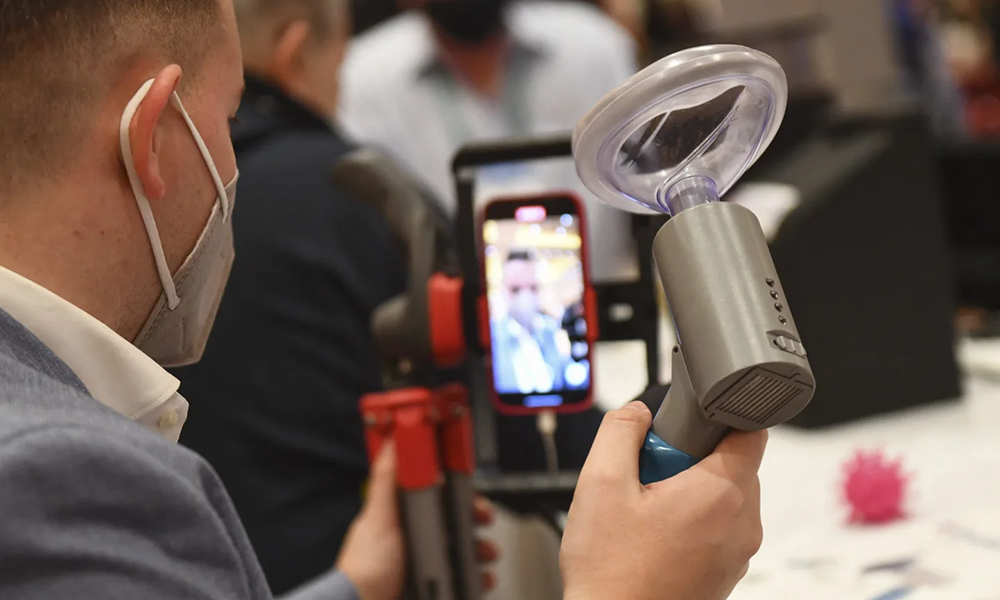新冠疫情是重塑数字医疗行业的宝贵机会,我们绝不能浪费

在全球疫情的恐怖氛围中,数字健康产业爆发了。新冠病毒危机为预防性护理的创新性发展带来了千载难逢的好机会。但是,一不留神,这个机会就要从我们手中溜走了。
政策制定者批准了远程医疗的使用,还推动了医疗设备与人工智能的结合。各国政府花了大价钱推广居家新冠检测,仅美国就投入了478亿美元用于在全美实施居家新冠检测战略,相关举措包括优化数据分享和诊断等,人均花费约143美元。卫生管理人员也应声而动,推出了可以减少医疗成本的数字化改进措施,加快了家庭护理进程,改善了慢性病检测,而后者是美国死亡和医疗账单的主要来源。
这是一个难得一见的“马歇尔计划时刻”,以一种更便宜、更有效也更具人文关怀的方式重建医疗体系。然而,如果我们不改变现在的高谈阔论,继续夸大渲染技术可以给我们带来什么,我们的行业将有可能白白浪费这个机会。科技界的创业家们称,后疫情世代是“颠覆者”的时代,颠覆者会推翻现有系统,以全新的系统取而代之,但他们是在帮倒忙。
如果在医疗保健行业也沿用硅谷“快速行动、打破陈规”的文化,我们将付出无法承受的代价。这种做法将影响患者的健康和安全,危及医院的抗逆能力,还会损害监管机构的信任。
被判处11年监禁的伊丽莎白·霍姆斯为我们敲响了警钟,冷酷地提醒着我们这种“颠覆性”炒作可能会给医疗保健行业带来何种毁灭性的后果。
我们回不去了。近四分之一的美国人因为费用问题放弃医疗。医疗支出占美国国内生产总值的20%,预计还将继续增长。持续的通货膨胀只会使问题加剧。当前的情况不可持续。
矛盾的是,恰恰是数字医疗繁荣发展的美好承诺在破坏它的未来。许多上市公司不久前的估值达到数十亿美元,现在的股价仅为票面价值的几个百分点。他们承诺过多,却兑现不足,浪费了数以亿计的本可以用于改善病人护理现状的真金白银,还损害了监管机构和投资者本就没那么坚定的信任。
媒体炒作使情况愈发糟糕。记者们大肆鼓吹健康科技界的童话故事,鼓吹独角兽企业和私营企业生产出了能够改变现有医疗系统的“颠覆性”产品。
我们以前遇到过这种情况。有些人可能还记得早期关于人工智能将取代医生的断言。2014年,IBM宣布其沃森系统将彻底改变癌症治疗。而事实上,它的人工智能甚至无法区分不同类型的癌症。2016年,人工智能先驱杰弗里·辛顿宣布,放射科医生将在几年内被淘汰。事实上,这两个领域的研究工作均仍处于初期,专家们表示,要想将上述解决方案变成现实还需要很多年。
如果说夸大其词损害信任,那么赤裸裸的欺骗则会带来灾难性的后果。在2014年Theranos的炒作达到顶峰时,伊丽莎白·霍姆斯谎称,她估值100亿美元的公司,可以用一滴血进行数百次测试。当时,投资者们要求我把自己的创业公司搞得“更像Theranos一点”。仅仅两年后,他们就让我证明我们和Theranos完全不同!
这对行业造成了无法估量的巨大伤害。震惊失望之余,风投公司选择了“更安全”的行业。监管机构叫停了审批。仅仅一名斯坦福大学毕业生的罪行就让行业多年投入付之东流。
新冠之后,得益于政府的大规模投资和新的监管举措,2021年成为数字健康领域创下历史纪录的一年,仅在美国,融资就达到近300亿美元。然而,进入2022年,行业融资和估值急剧下降。只把原因归咎于经济衰退是不够的,因为事实上,数字医疗行业比其他科技行业遭受的损失更大。
如果我们沿着正确的方向,围绕临床级创新和医疗验证协议来推动数字健康行业发展,我们的行业是通货紧缩的,能更好地适应市场趋势。业内下一批公司必须要长久。要做到这一点,我们必须培养诚实对话的风气,坦诚地讨论创新能实现什么,不能实现什么。否则,我们只能在五年后醒来,发现花了数千亿美元,却没得到任何实际价值或临床意义。
我们需要谈论的不是颠覆,而是合作。我们要做的不是画大饼许诺能生产出万能药,而是持续创新以推动可持续的、系统性的进步,特别是要用创新解决芸芸大众关注的健康问题。最重要的是,我们必须认真听:让医生和卫生管理人员的专业知识以及患者的需求来推动我们的决策,而不是操之过急。(财富中文网)
约纳坦·阿迪瑞是Health .io的创始人兼首席执行官。今年7月,该公司的智能手机家用肾脏测试获得了美国食品及药物管理局的批准。
《财富》杂志网站评论文章仅系作者个人观点,不代表《财富》杂志的观点和立场。
译者:Agatha
照片来源:PATRICK T. FALLON - AFP - GETTY IMAGES
在全球疫情的恐怖氛围中,数字健康产业爆发了。新冠病毒危机为预防性护理的创新性发展带来了千载难逢的好机会。但是,一不留神,这个机会就要从我们手中溜走了。
政策制定者批准了远程医疗的使用,还推动了医疗设备与人工智能的结合。各国政府花了大价钱推广居家新冠检测,仅美国就投入了478亿美元用于在全美实施居家新冠检测战略,相关举措包括优化数据分享和诊断等,人均花费约143美元。卫生管理人员也应声而动,推出了可以减少医疗成本的数字化改进措施,加快了家庭护理进程,改善了慢性病检测,而后者是美国死亡和医疗账单的主要来源。
这是一个难得一见的“马歇尔计划时刻”,以一种更便宜、更有效也更具人文关怀的方式重建医疗体系。然而,如果我们不改变现在的高谈阔论,继续夸大渲染技术可以给我们带来什么,我们的行业将有可能白白浪费这个机会。科技界的创业家们称,后疫情世代是“颠覆者”的时代,颠覆者会推翻现有系统,以全新的系统取而代之,但他们是在帮倒忙。
如果在医疗保健行业也沿用硅谷“快速行动、打破陈规”的文化,我们将付出无法承受的代价。这种做法将影响患者的健康和安全,危及医院的抗逆能力,还会损害监管机构的信任。
被判处11年监禁的伊丽莎白·霍姆斯为我们敲响了警钟,冷酷地提醒着我们这种“颠覆性”炒作可能会给医疗保健行业带来何种毁灭性的后果。
我们回不去了。近四分之一的美国人因为费用问题放弃医疗。医疗支出占美国国内生产总值的20%,预计还将继续增长。持续的通货膨胀只会使问题加剧。当前的情况不可持续。
矛盾的是,恰恰是数字医疗繁荣发展的美好承诺在破坏它的未来。许多上市公司不久前的估值达到数十亿美元,现在的股价仅为票面价值的几个百分点。他们承诺过多,却兑现不足,浪费了数以亿计的本可以用于改善病人护理现状的真金白银,还损害了监管机构和投资者本就没那么坚定的信任。
媒体炒作使情况愈发糟糕。记者们大肆鼓吹健康科技界的童话故事,鼓吹独角兽企业和私营企业生产出了能够改变现有医疗系统的“颠覆性”产品。
我们以前遇到过这种情况。有些人可能还记得早期关于人工智能将取代医生的断言。2014年,IBM宣布其沃森系统将彻底改变癌症治疗。而事实上,它的人工智能甚至无法区分不同类型的癌症。2016年,人工智能先驱杰弗里·辛顿宣布,放射科医生将在几年内被淘汰。事实上,这两个领域的研究工作均仍处于初期,专家们表示,要想将上述解决方案变成现实还需要很多年。
如果说夸大其词损害信任,那么赤裸裸的欺骗则会带来灾难性的后果。在2014年Theranos的炒作达到顶峰时,伊丽莎白·霍姆斯谎称,她估值100亿美元的公司,可以用一滴血进行数百次测试。当时,投资者们要求我把自己的创业公司搞得“更像Theranos一点”。仅仅两年后,他们就让我证明我们和Theranos完全不同!
这对行业造成了无法估量的巨大伤害。震惊失望之余,风投公司选择了“更安全”的行业。监管机构叫停了审批。仅仅一名斯坦福大学毕业生的罪行就让行业多年投入付之东流。
新冠之后,得益于政府的大规模投资和新的监管举措,2021年成为数字健康领域创下历史纪录的一年,仅在美国,融资就达到近300亿美元。然而,进入2022年,行业融资和估值急剧下降。只把原因归咎于经济衰退是不够的,因为事实上,数字医疗行业比其他科技行业遭受的损失更大。
如果我们沿着正确的方向,围绕临床级创新和医疗验证协议来推动数字健康行业发展,我们的行业是通货紧缩的,能更好地适应市场趋势。业内下一批公司必须要长久。要做到这一点,我们必须培养诚实对话的风气,坦诚地讨论创新能实现什么,不能实现什么。否则,我们只能在五年后醒来,发现花了数千亿美元,却没得到任何实际价值或临床意义。
我们需要谈论的不是颠覆,而是合作。我们要做的不是画大饼许诺能生产出万能药,而是持续创新以推动可持续的、系统性的进步,特别是要用创新解决芸芸大众关注的健康问题。最重要的是,我们必须认真听:让医生和卫生管理人员的专业知识以及患者的需求来推动我们的决策,而不是操之过急。(财富中文网)
约纳坦·阿迪瑞是Health .io的创始人兼首席执行官。今年7月,该公司的智能手机家用肾脏测试获得了美国食品及药物管理局的批准。
《财富》杂志网站评论文章仅系作者个人观点,不代表《财富》杂志的观点和立场。
译者:Agatha
Amid the horror of a global pandemic, it happened: Digital health exploded. The urgency of the COVID crisis provided a once-in-a-century opportunity to jump-start innovation in preventive care. However, if we are not careful, this opportunity will slip through our hands
Policymakers enabled access to telehealth and advanced the incorporation of artificial intelligence (A.I.) in medical devices. Governments spent billions to make home COVID testing accessible. The U.S. alone dedicated $47.8 billion to implement a national at-home COVID testing strategy, including improvements in data sharing and diagnostics—roughly $143 per person. Health administrators rose to the occasion and introduced cost-saving digital improvements that accelerated home care and improved the detection of chronic diseases, the leading drivers of death and costs in the U.S.
It was a rare “Marshall Plan moment” to rebuild health care in a more affordable, efficient, and humane way. Yet our industry risks squandering this opportunity if we don’t change our discourse and stop overselling what our technology can do. Tech entrepreneurs, who claim that the post-COVID era is the time to be “disrupters” by blowing up the system as we know it and replacing it with something entirely different, are doing a great disservice to health care.
Adopting the Silicon Valley culture of “move fast and break things” in health care will have a cost we cannot bear. It will impact patients’ health and safety, risk hospitals’ resilience, and compromise the regulators’ trust.
The sentencing of Elizabeth Holmes to 11 years in prison is a grim reminder of the devastating consequences the “disruption” hype can have for health care.
We can’t afford to go back. Nearly one in four Americans skip medical care because of the cost. Health expenditure accounts for 20% of the U.S. GDP and is expected to keep growing. Persistent inflation will only aggravate the problem. The current situation is unsustainable.
Paradoxically, the very promises of the digital health boom are now undermining its future. Many publicly traded companies, which were recently valued in the billions, are now trading for cents on the dollar. They overpromised and underdelivered, wasted billions that were earmarked to improve patient care, and jeopardized the already fragile trust of regulators and investors.
Media hype compounded the problem as journalists trumpeted the fairy tale of health-tech unicorns and private companies with “game-changing” products to transform the health care system as we know it.
We have been here before. Some might remember the early predictions that A.I. would replace doctors. In 2014, IBM announced that its Watson system would revolutionize cancer care. Under the hood, its A.I. had trouble even distinguishing between different forms of cancer. In 2016, A.I. pioneer Geoffrey Hinton proclaimed that radiologists would be obsolete in a few years. In both cases, the work is still preliminary, and experts say it will be years before such solutions come to pass.
If exaggeration is bad for trust, outright deception is fatal. At the height of the Theranos hype in 2014, Elizabeth Holmes falsely claimed that her company, valued at $10 billion, could run hundreds of tests on a single drop of blood. At the time, investors urged me to make my own startup “more like Theranos.” Just two years later, they asked me to prove we were nothing like Theranos!
The damage caused to the industry was immeasurable. Shocked and disappointed, venture capital firms opted for “safer” sectors. Regulators halted approvals. Years of investment were lost over one Stanford graduate’s crimes.
In the wake of COVID, massive government investments and new regulation initiatives made 2021 a record-breaking year for digital health, with private financial rounds reaching nearly $30 billion in the U.S. alone. However, 2022 saw a precipitous drop in funding and valuations. Blaming the economic downturn is not a sufficient explanation when, in fact, digital health suffered more than other tech sectors.
When done right and built around clinical-grade innovation and alongside medical protocols of verification, digital health is deflationary and can be more resilient to market trends. The next crop of companies must be built to last. To do that, we must cultivate an honest conversation about what innovation can and cannot achieve. Otherwise, we’ll wake up five years from now to hundreds of billions spent with no real value or clinical impact to show for it.
Instead of talking about disruption, we need to talk about collaboration. Instead of promising a panacea, we need to produce innovation that supports sustainable, systemic progress, especially on mass-population health problems. Above all, we must listen: Let the expertise of physicians and health administrators and the needs of patients drive our decision-making instead of getting ahead of ourselves.
Yonatan Adiri is the founder and CEO of Healthy.io. In July, the company received clearance from the FDA for its smartphone-powered at-home kidney test.
The opinions expressed in Fortune.com commentary pieces are solely the views of their authors and do not necessarily reflect the opinions and beliefs of Fortune.













